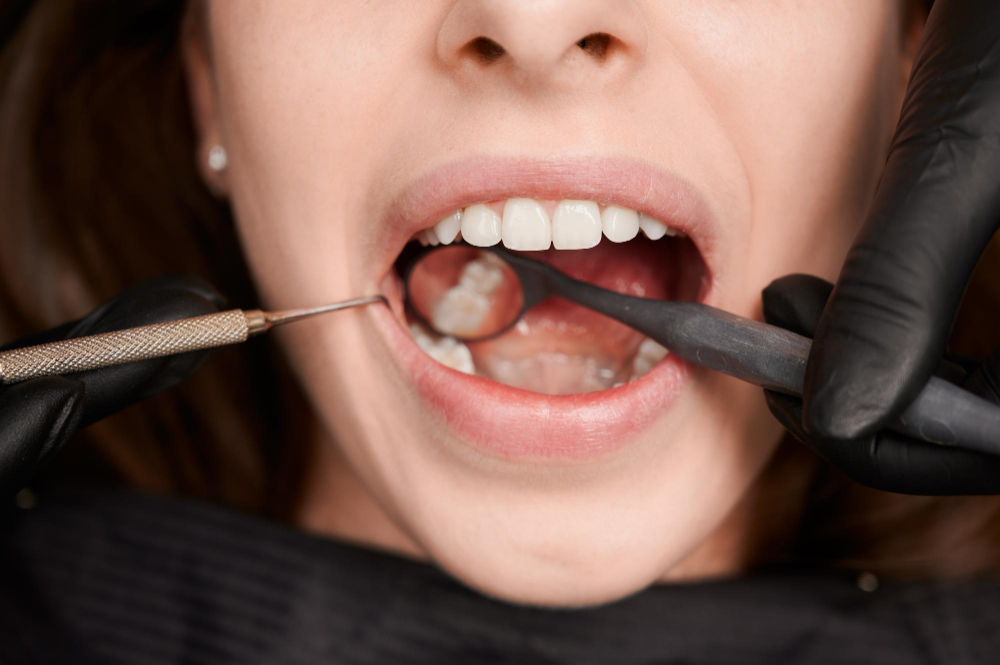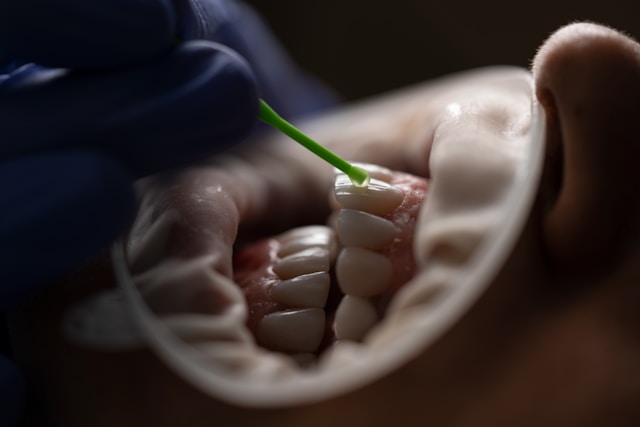Composite restorations are popularly known as tooth-colored fillings. Composite fillings are a preferred choice for restoring decayed, cracked, or chipped teeth. They are known to deliver aesthetic treatment options compared to traditional silver fillings. Understanding the step-by-step process while undergoing composite restorations will reduce anxiety before your dental appointment. Read on to understand what to expect when you sit through a composite resin filling appointment.

Initial Consultation and Examination
The first step before undergoing a composite resin filling is a comprehensive dental exam. During dental consultation, the dentist will:
- Examine the tooth well visually and may take X-rays if needed.
- Diagnostic X-rays help determine the extent of caries or tooth damage.
- The dentist will then explain the options for fillings and their pros and cons. It is at this stage that you might be recommended composite fillings as the best choice.
- Your dentist will go through your medical history to make sure you are fit to go for the procedure.

Preparing for the Procedure
Once you choose to go ahead with a composite filling, the preparation for the procedure is done. This involves:
-
Choosing the Shade
One advantage of choosing composite cavity fillings is that they may be matched exactly to the natural shade of your teeth. Dentists typically use a shade guide to select the composite resin shade that most accurately matches the natural color of your teeth.
-
Isolating the Tooth
The area worked on must be dry and moisture or saliva-free. The tooth will be isolated using a dental rubber dam or cotton balls. This helps in proper adhesion of the composite resin onto the tooth.
-
Anesthesia
Local anesthesia can be administered to ensure comfort during the procedure. The dentist will use a local anesthetic injection to numb the tooth and gums around the area. It can take a few minutes to numb the area completely. Once the anesthesia sets in, you will be evaluated for comfort.
-
Removing the Decay
When the tooth is well anesthetized and isolated, dental decay or caries will be removed using a high-speed dental drill and other hand instruments. The dental decay has to be removed precisely to ensure that all decay is removed and healthy tooth structure is preserved.
After the decay is removed, the cavity is cleaned and disinfected to prepare it for the composite filling.
-
Etching and Bonding
For the bonding of composite resin to the tooth, the following is done to prepare the tooth:
- An acidic gel is applied into the cavity. This etching gel roughens the tooth surface and creates tags for the bonding agent.
- The gel will be washed off, and the tooth will be dried.
- A bonding agent is a dental adhesive applied to the etched tooth structure. This adhesive helps with the adhesion of the resin to the tooth.
-
Placing the Composite Resin
When the tooth preparation is done the process of placement of the the composite resin begins.
-
Layering the Resin
- Composite resin is filled in the tooth in a layered manner.
- First, a small amount of resin is placed into the cavity, and then a curing blue light is used to harden the composite resin layer by layer.
- This layering is repeated until the entire cavity is filled.
-
Shaping and Contouring
Once the final composite resin layer is placed, the dentist will then shape and finish the composite restoration to match the natural structure of the tooth. This step is important as it decides the comfort of the filling.
-
Curing the Composite
- Once the composite resin is layered and completed, it needs a final curing using a curing light. A high-intensity curing light hardens the composite resin from within.
- This increases the durability of the filling and increases the bond strength of the resin.
- Final adjustments will be done with a composite finishing and polishing kit.
- This process includes smoothing rough and sharp edges and refining until achieving the perfect fit.

-
Polishing the Filling
- The final polishing of the composite filling uses polishing tools and instruments to give it a natural and smooth finish.
- This polishing helps to avoid future stains and wear. It keeps the filling aesthetic and well maintained for a long time.
-
Checking the Bite
Your dentist will check your occlusal bite using special paper to identify any high points in the filling. If any high points are found, they will need to be adjusted to ensure a comfortable bite.
Post-Procedure Care
After the procedure is done, your dentist will give you instructions concerning post-procedure care:
- It is advised to avoid eating any hard or sticky food for a few hours after the procedure. These types of food may dislodge the restoration
- Oral hygiene should be maintained by brushing and flossing twice a day.
- Regular dental check-ups and dental cleanings are required to monitor the condition of the composite tooth filling and overall oral health.
- It is normal to have some sensitivity to extremely hot or cold food or drink for a few days after the restoration. If sensitivity does not wear off or worsens over time, it is advisable to contact your dentist for a follow-up.

Conclusion
Composite fillings are a viable choice for restoring decaying or damaged teeth while maintaining a natural appearance. Understanding the step-by-step restoration procedure can help you feel confident about your dental appointment. It’s important to follow your dentist’s post-procedure instructions to prolong the lifespan of the filling. Routine dental visits and appropriate oral hygiene are essential for maintaining dental health and enjoying a bright, white, and healthy smile.
Le Sueur Dental Clinic is a trusted family dental clinic dedicated to providing all-inclusive and compassionate care, ensuring that every step of your composite filling procedure is clearly explained and tailored to your unique dental needs.
Contact us or schedule your appointment today to access the best dental care and answers to all your restorative questions.

